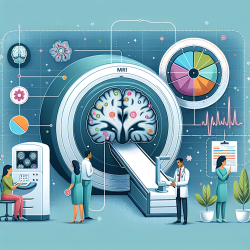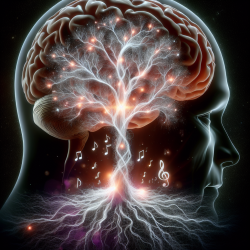Introduction
In the realm of neuro-oncology, gliomas present a significant challenge due to their infiltrative nature and complex characterization. Traditional MRI techniques, while useful, often fall short in providing detailed insights into tumor genotype and diffuse glioma delineation. The recent research article, "Advanced MR Techniques for Preoperative Glioma Characterization: Part 2," offers a comprehensive review of cutting-edge MRI methods that promise to enhance the preoperative assessment of gliomas. This blog will delve into these advanced techniques and discuss how practitioners can leverage these insights to improve clinical outcomes.
Advanced MR Techniques: A New Horizon
The study highlights several advanced MR techniques that have shown promise in preoperative glioma characterization. These include:
- Magnetic Resonance Spectroscopy (MRS): This technique provides metabolic information about the tumor, offering insights into its biological behavior.
- Chemical Exchange Saturation Transfer (CEST): CEST enhances the contrast in MRI images, aiding in the differentiation of tumor tissues.
- Susceptibility-Weighted Imaging (SWI): SWI is valuable for detecting microbleeds and calcifications, which are crucial for glioma grading.
- MRI-PET: Combining MRI with PET imaging offers a more comprehensive view of the tumor's metabolic activity and structure.
- MR Elastography (MRE): MRE assesses the mechanical properties of brain tissues, providing additional context for tumor characterization.
- MR-Based Radiomics: Radiomics extracts quantitative features from MRI images, which can be used to predict tumor behavior and treatment response.
Implications for Practitioners
For practitioners in the field of speech language pathology and related disciplines, integrating these advanced MR techniques into clinical practice can significantly enhance the precision of glioma characterization. Here are some practical steps to consider:
- Continuous Education: Stay updated with the latest advancements in MRI technology and their applications in neuro-oncology.
- Collaborative Approach: Work closely with radiologists and neuro-oncologists to interpret advanced MRI findings and integrate them into treatment planning.
- Patient-Centric Care: Use detailed MRI insights to tailor interventions that address the specific needs of patients with gliomas, thereby improving therapeutic outcomes.
- Research Participation: Engage in or support research initiatives that explore the clinical applications of these advanced techniques, contributing to the body of evidence that supports their efficacy.
Encouraging Further Research
While the advancements in MR techniques are promising, further research is essential to validate their clinical efficacy and explore new applications. Practitioners are encouraged to participate in research studies, contribute to data collection, and collaborate with academic institutions to drive innovation in glioma characterization.
To read the original research paper, please follow this link: Advanced MR Techniques for Preoperative Glioma Characterization: Part 2.










